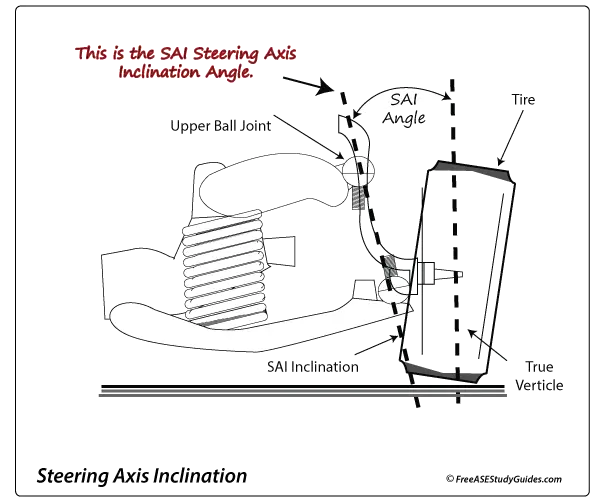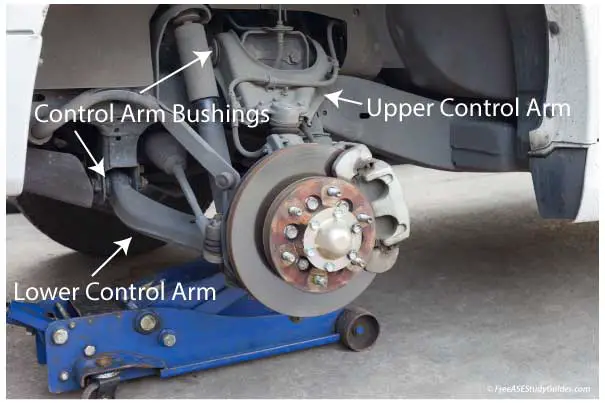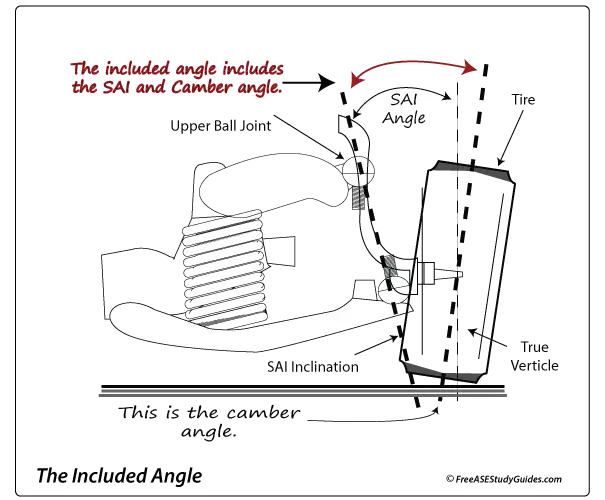SAI and the Included Angle

The (SAI) Steering Axis Inclination angle is created and measured in degrees. It runs from the lower ball joint through the upper ball joint or, on most front-wheel vehicles, through the center of the strut mount.
The illustration uses ball joints to represent the angle. This measurement of degrees includes the measurement from the lower ball joint to the upper ball joint or the upper strut mount and true vertical (the tire sitting straight up and down). The SAI angle doesn't include the camber angle.

This is because Steering Axis Inclination is a non-adjustable angle. Something is likely bent somewhere in the steering or suspension when this angle is out of specification.

The included angle is the fixed SAI with the camber angle included. This is why it's called the included angle. The larger of the two angles is the included angle, and the smaller the SAI angle. The major difference between the SAI and the included angle is that the camber angle is added to the SAI angle to obtain the included angle.